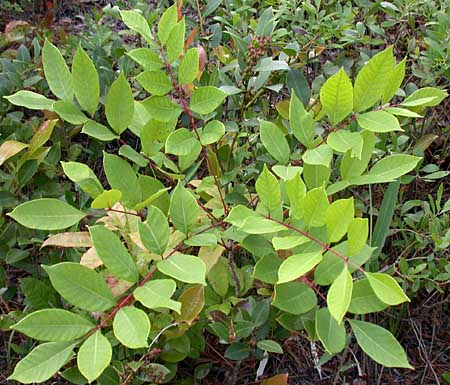
| Poison Sumac is a small tree or large shrub with large attractive leaves and white fruits that could be used as an ornamental if it didn't cause severe skin irritation in most people. Its smaller relatives with 3-parted leaves, Poison Ivy and Poison Oak, have similar irritating properties. In North Carolina Poison Sumac is fairly common in swamp edges and wet woods in the Coastal Plain. Formerly called Rhus vernix. Scotland Co., NC 6/6/2003.
|
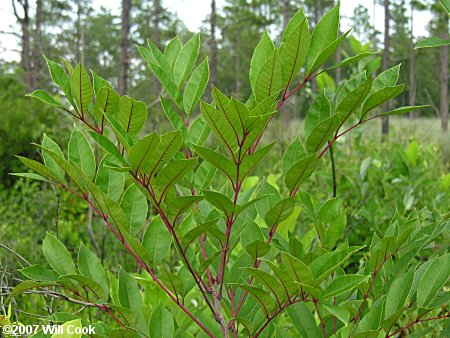
| Caterpillars of several species of attractive moths feed on leaves of poison-ivy and poison-sumac, including Beautiful Eutelia and Eyed Paectes. Scotland Co., NC 7/1/07.
|
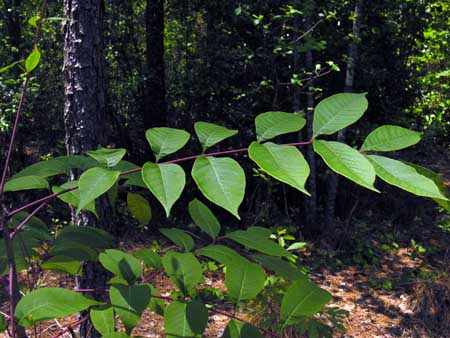
| Key features to identify it include large alternate leaves usually with 9-13 entire (not toothed) leaflets and a red rachis (the stem connecting the leaflets). The leaflets are smooth and may be shiny above. Moore Co., NC 6/18/05.
|
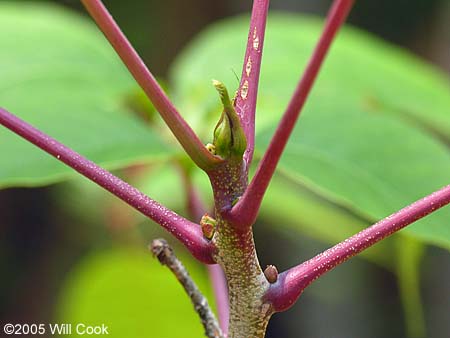
| The red rachis is reasonably easy to spot from a distance, once you know to look for it. Moore Co., NC 6/18/05.
|
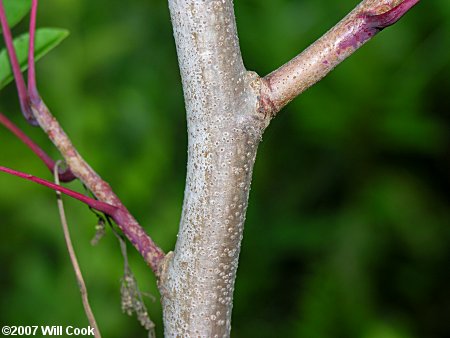
| Scotland Co., NC 7/1/07.
|
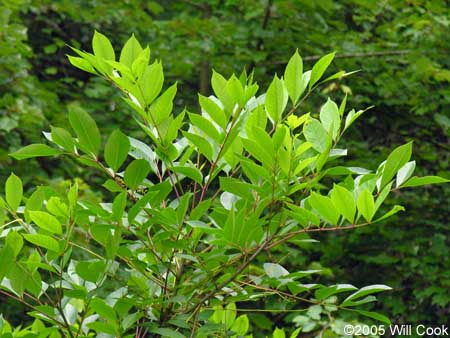
| Poison Sumac is absent, or nearly so, from the Piedmont region of NC and is rare in the Mountains. This one was photographed along the Blue Ridge Parkway (milepost 217) in Alleghany Co., NC 7/3/05.
|
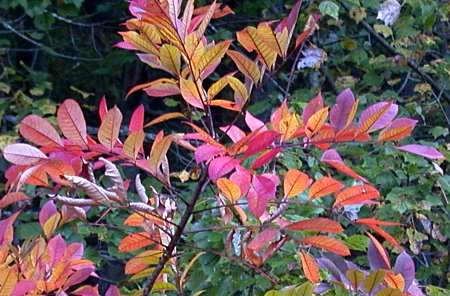
| Fall color is brilliant, with a range of hues from bright yellow to deep purple. Alleghany Co., NC 9/26/04.
|
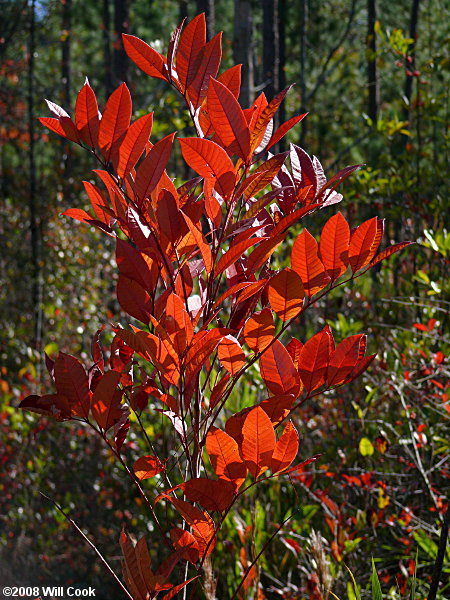
| Scotland Co., NC 11/1/08.
|
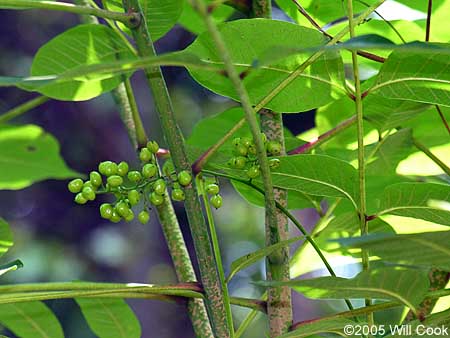
| Small greenish flowers are followed by white fruits, which are technically called drupes. These green drupes are not ripe yet. Moore Co., NC 6/18/05.
|
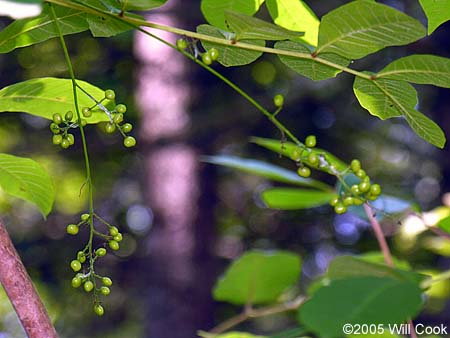
| Unripe drupes. Moore Co., NC 6/18/05.
|
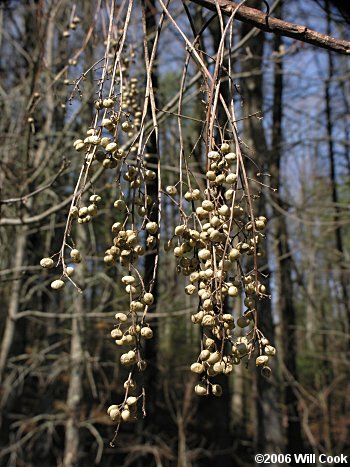
| The white drupes may last through the winter. Alleghany Co., NC 4/14/06.
|
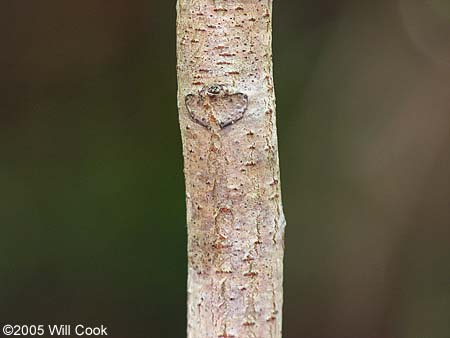
| Bark of a young tree. All parts of the plant are supposed to be poisonous to touch, including the bark. Moore Co., NC 6/18/05.
|
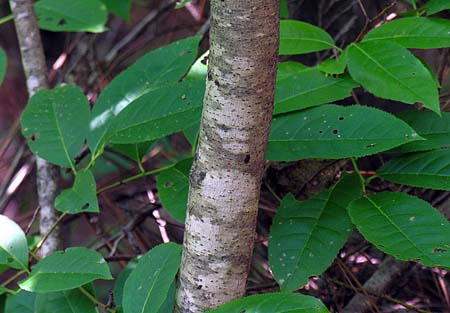
| Bark of a medium-sized shrub (the leaves in this photo are Sourwood, not Poison Sumac). Moore Co., NC 6/18/05.
|
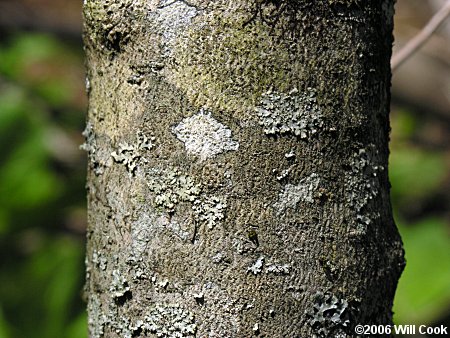
| Bark of a large shrub. Alleghany Co., NC 4/14/06.
|













